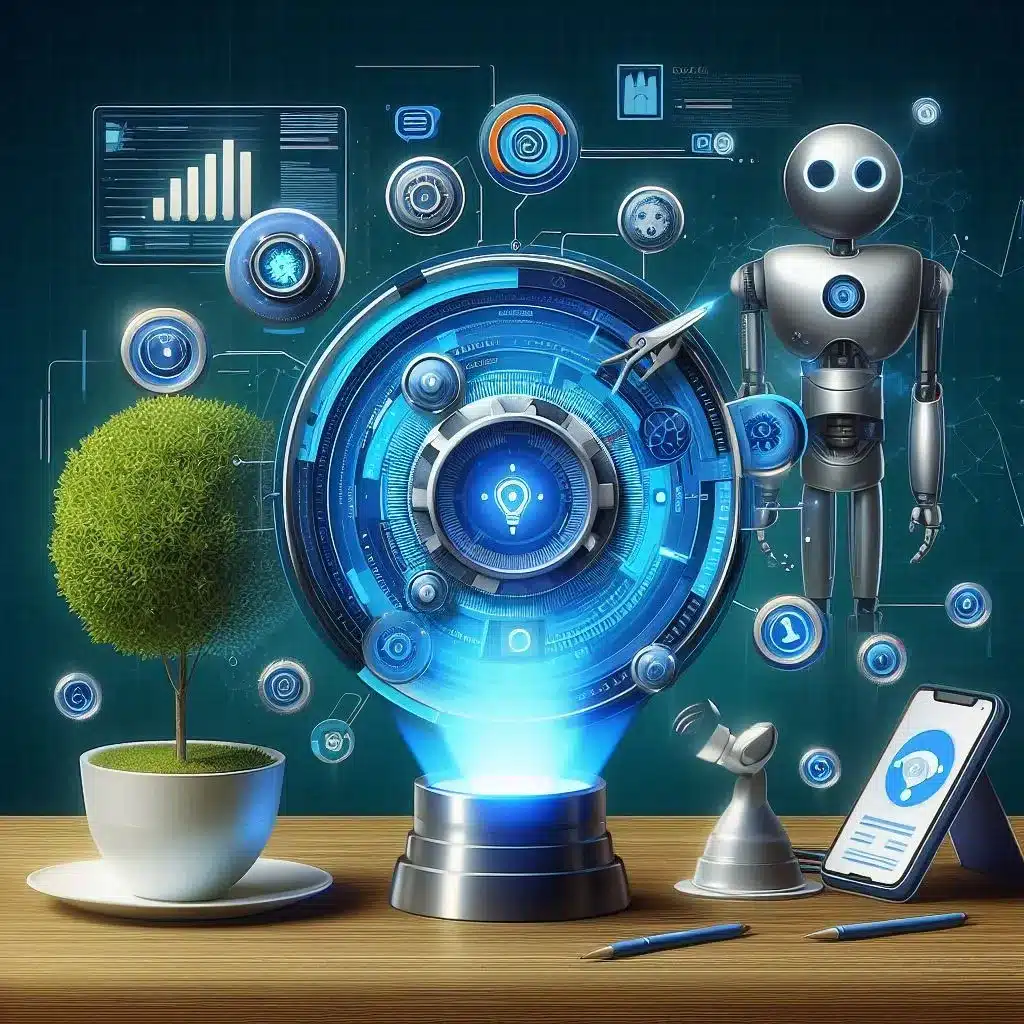
How To Create Marketing Personas
Developing a clear and detailed understanding of your target audience is essential for effective marketing. In this guide, we will look at how to create marketing personas, taking you through the steps to identify and define your ideal customers, so you can tailor your marketing strategies more precisely.
Marketing personas are fictional characters that represent the different segments of your customer base. These personas are based on real data and insights about your existing and potential customers. By creating these personas, you can gain a better understanding of who your customers are, what they need, and how they make purchasing decisions.
In this blog, we will explore the key components of a marketing persona, the process of gathering and analysing customer data, and the best practices for using personas in your marketing efforts. By the end, you’ll have the tools to create personas that can inform your marketing strategies and improve your engagement with your audience.
What are Marketing Personas?
Marketing personas are semi-fictional profiles representing different segments of your target audience. These profiles are constructed using a combination of real customer data and informed assumptions. Each persona provides a detailed depiction of a typical customer within a specific segment, including demographic information, interests, behaviours, goals, and challenges.
Creating marketing personas involves gathering and analysing data from various sources, such as customer surveys, interviews, and market research. This data helps to build a comprehensive picture of your audience, allowing you to tailor your marketing strategies more effectively.
By understanding your personas, you can create more targeted and relevant content, improve customer engagement, and make informed decisions about product development and marketing campaigns. Personas act as a guide for understanding the needs and preferences of different customer groups, ultimately helping to align your efforts with their expectations.
Need help creating marketing personas?
How Do You Create Marketing Personas?
Creating marketing personas involves several steps to ensure they accurately represent your target audience. Follow these guidelines to develop effective personas:
1. Gather Data
Begin by collecting information about your existing customers. Use various sources such as customer surveys, interviews, website analytics, and sales data. Pay attention to demographic details like age, gender, location, and income, as well as psychographic information such as interests, values, and lifestyle.
2. Identify Patterns
Analyse the collected data to identify common characteristics and behaviours among your customers. Look for patterns in how different segments interact with your brand, their purchasing habits, and their preferences. Group customers with similar traits together.
3. Create Persona Profiles
For each identified group, create a detailed profile that includes the following elements:
- Demographic Information: Age, gender, occupation, income, education, and location.
- Background: Brief description of their lifestyle, interests, and values.
- Goals: What they aim to achieve, both personally and professionally.
- Challenges: Common problems or obstacles they face that your product or service can address.
- Behaviour Patterns: How they interact with your brand, including purchasing habits and preferred communication channels.
Remember that a marketing persona is not intended to detail one specific individual and should not be based on a single person. Instead, it represents a collective profile that reflects the majority of the people it is designed to represent. This persona is created to represent a segment of your target market, not the entire market. For instance, if you are an agency that serves other businesses and your target market is ‘Marketers,’ it is appropriate to have multiple personas for different types of marketers, provided there are distinct differences between them that justify separate personas. You might have various marketer personas distinguished by job title, business size, industry, or other relevant factors that make sense for your business.
4. Name and Visualise Your Personas
Give each persona a name and, if possible, include a photo to make them more relatable. This helps to humanise the personas and makes it easier for your team to understand and refer to them.
5. Validate and Refine
Share the personas with your team and gather feedback. Ensure they accurately represent your target audience and make adjustments if necessary. Personas should evolve over time as you gather more data and insights.
6. Apply Your Personas
Use the personas to guide your marketing strategies, content creation, product development, and customer service approaches. They should inform decisions and help ensure your efforts are aligned with the needs and preferences of your target audience.
Which Teams Should You Involve When Creating Marketing Personas?
Creating accurate and comprehensive marketing personas requires input from various teams within your organisation. Involving multiple departments ensures that the personas are well-rounded and reflect a holistic view of your customers. Consider including the following teams:
1. Marketing Team
The marketing team plays a central role in developing personas. They often have valuable insights into customer behaviour, preferences, and trends from campaigns, market research, and customer feedback.
2. Sales Team
Sales representatives interact directly with customers and prospects. They can provide firsthand information about customer needs, common objections, and the sales process. Their input can help in understanding the motivations and challenges faced by different customer segments.
3. Customer Service Team
Customer service teams engage with customers on a daily basis, handling inquiries, complaints, and support requests. Their experience offers a deep understanding of customer pain points and satisfaction levels, which is essential for creating accurate personas.
4. Product Development Team
The product development team can contribute insights into how customers use your products or services. They can share information about feature requests, usability issues, and customer feedback related to product performance.
5. Data Analytics Team
Data analysts can provide quantitative insights based on customer data, including purchasing patterns, website behaviour, and demographic trends. Their analysis helps identify significant patterns and correlations that inform persona creation.
6. Executive Team
Involving the executive team ensures that the personas align with the company’s strategic goals and vision. Their perspective can help prioritise key segments and ensure that the personas support broader business objectives.
7. External Agency Partners
If you work with any external marketing or research agencies, their expertise and external perspective can be invaluable. These partners can provide additional data, insights, and strategic recommendations that enhance the depth and accuracy of your marketing personas.
How to Collect Information to Help You Build Customer Personas
Creating detailed and accurate customer personas involves gathering and analysing a variety of data. Follow these steps to collect the necessary information:
1. Review Existing Customer Data
Start with the data you already have. Look at your customer database, CRM system, and any analytics tools you use. Identify patterns in demographics, purchase history, and behaviour. Pay attention to:
– Age
– Gender
– Location
– Job titles
– Buying frequency
– Average purchase value
2. Conduct Customer Surveys
Create and distribute surveys to gather more specific information. Ask questions that will help you understand your customers’ needs, preferences, and challenges. Consider using online survey tools like SurveyMonkey or Google Forms. Key questions might include:
– What are your main goals or objectives?
– What challenges do you face?
– Which features do you value most in a product/service?
– How do you prefer to receive information (email, social media, etc.)?
3. Interview Customers
For deeper insights, conduct one-on-one interviews with a sample of your customers. These conversations can reveal nuanced information about their motivations and pain points. Prepare a set of open-ended questions and encourage customers to share their experiences in detail.
4. Analyse Website and Social Media Analytics
Use tools like Google Analytics and social media insights to understand how visitors interact with your website and social media platforms. Look for trends in:
– Most visited pages
– Time spent on site
– Bounce rate
– Engagement rates on social media posts
– Demographics of your online audience
5. Leverage Customer Feedback
Review feedback from customer service interactions, support tickets, and product reviews. This feedback often highlights recurring issues and common praises, providing a clearer picture of what your customers value and struggle with.
6. Use Third-Party Research
Supplement your data with third-party market research reports relevant to your industry. These reports can offer broader insights into market trends, consumer behaviour, and competitive analysis.
7. Engage with Your Sales Team
Your sales team interacts with customers regularly and can provide valuable qualitative data. Gather their insights on common customer objections, questions, and feedback they receive during the sales process.
8. Observe Competitors
Analyse your competitors’ customer base and their engagement strategies. Look at their marketing materials, social media activity, and customer reviews to identify gaps and opportunities.
9. Create Customer Segments
Once you have collected all relevant data, segment your customers into groups based on shared characteristics and behaviours. This segmentation will form the foundation for your personas.
10. Validate Your Findings
Share your initial personas with relevant teams within your organisation and refine them based on feedback. Ensure that the personas accurately reflect your customer base and are useful for guiding marketing strategies.
11. Listen to Recorded Conversations
Many companies today record conversations with prospects and customers. Listening to these calls can provide marketers with valuable insights into customer motivations, concerns, and preferences. This firsthand information can help refine and enrich your personas.
Are you looking for extra resources to pull together your customer persona development?
What Templates Can You Use to Define Your Marketing Personas?
Creating marketing personas can be streamlined with the use of templates. These templates help organise the information in a structured manner, ensuring that all relevant aspects of your personas are covered. Generally, it’s recommended to have a single-page template per persona because it gives you all the needed information at a glance. Below are some commonly used templates that can aid in defining your marketing personas:
1. Basic Persona Template
This template provides a straightforward format to capture essential details about your persona. It typically includes:
- Name: A fictional name to personalise the persona.
- Demographics: Age, gender, location, and occupation.
- Background: Education, career path, and family life.
- Goals: The persona’s main objectives and aspirations.
- Challenges: Common obstacles and pain points.
- Interests: Hobbies, interests, and values.
- Preferred Communication Channels: How they prefer to receive information (e.g., email, social media, phone).
2. In-Depth Persona Template
For a more detailed understanding, an in-depth template covers additional aspects such as:
- Bio: A narrative description of the persona’s background and daily life.
- Buying Behaviour: Insights into purchasing decisions, budget constraints, and preferred payment methods.
- Technology Use: Devices and platforms they frequently use.
- Quotes: Direct quotes from customer interviews that capture their voice and concerns.
- Brands They Follow: Other brands or influencers they engage with.
- Content Preferences: Types of content they find useful (blogs, videos, webinars).
3. Empathy Map
An empathy map helps visualise what the persona thinks, feels, says, and does. It includes:
- Think and Feel: What are their worries and aspirations?
- See: What do they see in their environment?
- Hear: What are they hearing from others?
- Say and Do: What are their daily activities and how do they speak about their experiences?
- Pains: Challenges they face.
- Gains: Benefits they seek.
5. Visual Persona Template
This template incorporates visual elements to make the persona more engaging. It might include:
- Infographics: Visual representations of data and statistics.
- Charts and Graphs: To illustrate behaviour patterns and preferences.
- Images: Photos or icons that represent the persona’s lifestyle and interests.
6. User Journey Map Template
While not strictly a persona template, a user journey map complements personas by outlining the steps a persona takes from awareness to purchase. It includes:
- Stages: Awareness, consideration, decision, and post-purchase.
- Touchpoints: Interactions the persona has with your brand at each stage.
- Goals: What the persona aims to achieve at each stage.
- Pain Points: Challenges they encounter along the way.
How Do You Use Marketing Personas in Your Strategy?
Marketing personas are invaluable tools that help refine and focus your marketing efforts. Here are several ways to integrate personas into your strategy:
1. Strategic Planning
Incorporate personas into your broader strategic planning. Use the insights gained from your personas to inform business decisions, market positioning, and long-term planning. This ensures your strategies are aligned with the actual needs and preferences of your target market.
2. Product Development
Personas can guide product development by highlighting the features and solutions that are most important to your customers. Use the insights from your personas to prioritise product enhancements and new features that will meet the specific needs of different customer segments.
3. Customer Journey Mapping
Map out the typical interactions each persona has with your brand. Identify the touchpoints where they interact with your business, from awareness to purchase and beyond. This helps you understand their experience and identify opportunities to improve their journey and increase satisfaction.
4. Sales Strategies
Equip your sales team with detailed personas to help them understand the prospects they are engaging with. This knowledge allows sales representatives to tailor their pitch and communication style to better align with the needs and expectations of each persona.
5. Content Creation
Understanding the interests, challenges, and goals of your personas allows you to create content that resonates with them. Tailor your blog posts, videos, social media updates, and other content to address their specific needs and preferences. This approach increases engagement and relevance.
6. Developing Visuals
Having specific personas in mind can help you create visuals that will resonate with your target audience. These might include people that they feel are similar to them, locations that are familiar or inspiring, or situations that they often find themselves in.
7. Targeted Advertising
Use personas to inform your advertising campaigns. By knowing the demographics, behaviours, and preferences of your target segments, you can design ads that speak directly to their interests. This can improve the effectiveness of your campaigns and increase conversion rates.
8. Email Marketing
Segment your email lists based on your personas. Develop personalised email campaigns that cater to the unique needs and interests of each segment. Personalised emails are more likely to be opened and acted upon, leading to better engagement.
9. Customer Support
Use personas to train your customer support team. Understanding the common challenges and preferences of your personas enables your support team to provide more empathetic and effective assistance. This can improve customer satisfaction and loyalty.
10. Utilising AI in Marketing
If you use AI to help with your marketing, these personas can be very useful in helping Artificial Intelligence to better articulate a strategy or create marketing collateral that will achieve cut-through with your audience.
What are the Differences Between B2B and B2C Marketing Personas?
Creating marketing personas for Business-to-Business (B2B) and Business-to-Consumer (B2C) contexts requires different approaches. Understanding these differences helps tailor your marketing strategies more effectively.
Decision-Making Process
Decision making in B2B:
In B2B marketing, the decision-making process is often more complex and involves multiple stakeholders. These personas usually represent various roles within an organisation, such as decision-makers, influencers, and end-users. Each role has distinct needs, goals, and concerns that must be addressed.
Decision making in B2C:
In B2C marketing, the decision-making process is typically quicker and involves fewer people. Personas in this context often focus on individual consumers who are making personal purchasing decisions based on their preferences, lifestyle, and emotional triggers.
Goals and Motivations
Goals and motivation in B2B:
B2B personas are motivated by business needs, such as increasing efficiency, reducing costs, or gaining a competitive edge. Their goals are aligned with the objectives of their organisation, and they are looking for solutions that provide measurable business benefits.
Goals and motivation in B2C:
B2C personas are driven by personal needs and desires. Their motivations often include convenience, enjoyment, status, or emotional satisfaction. Understanding these personal motivations is key to connecting with B2C customers.
Buying Criteria
Buying criteria in B2B:
The buying criteria for B2B personas are usually more rational and based on logic. They look for detailed information, case studies, ROI analyses, and product specifications. Trust, reliability, and long-term value are significant factors in their purchasing decisions.
Buying criteria in B2C:
B2C personas may rely more on emotional and psychological factors when making a purchase. They often look for reviews, recommendations, and social proof. Brand image, price, and convenience play a significant role in their buying decisions.
Communication Channels
B2B communications channels:
B2B marketing often involves direct communication channels such as email, professional social networks (e.g., LinkedIn), and industry events. Content like white papers, webinars, and in-depth articles are effective for engaging B2B personas.
B2C communications channels::
B2C marketing uses a broader range of channels to reach consumers, including social media platforms, email, retail environments, and mass media. Content that is engaging, entertaining, and visually appealing tends to resonate well with B2C personas.
Relationship Building
Relationship building in B2B:
Building long-term relationships is critical in B2B marketing. Trust and credibility are established through consistent, value-driven interactions. Personalised communication and ongoing support are essential for maintaining these relationships.
Relationship building inB2C:
While relationship building is also important in B2C marketing, it often centres around brand loyalty and repeat purchases. Creating positive experiences and engaging content helps build a strong connection with B2C customers.
Wrap up
As a business leaders, we’re sure that you know your customer inside and out. But it’s still important to have it all document and let it drive everything you do in marketing. Our team can help you to brainstorm, organise your information and create the assets you need to win in the market.




















